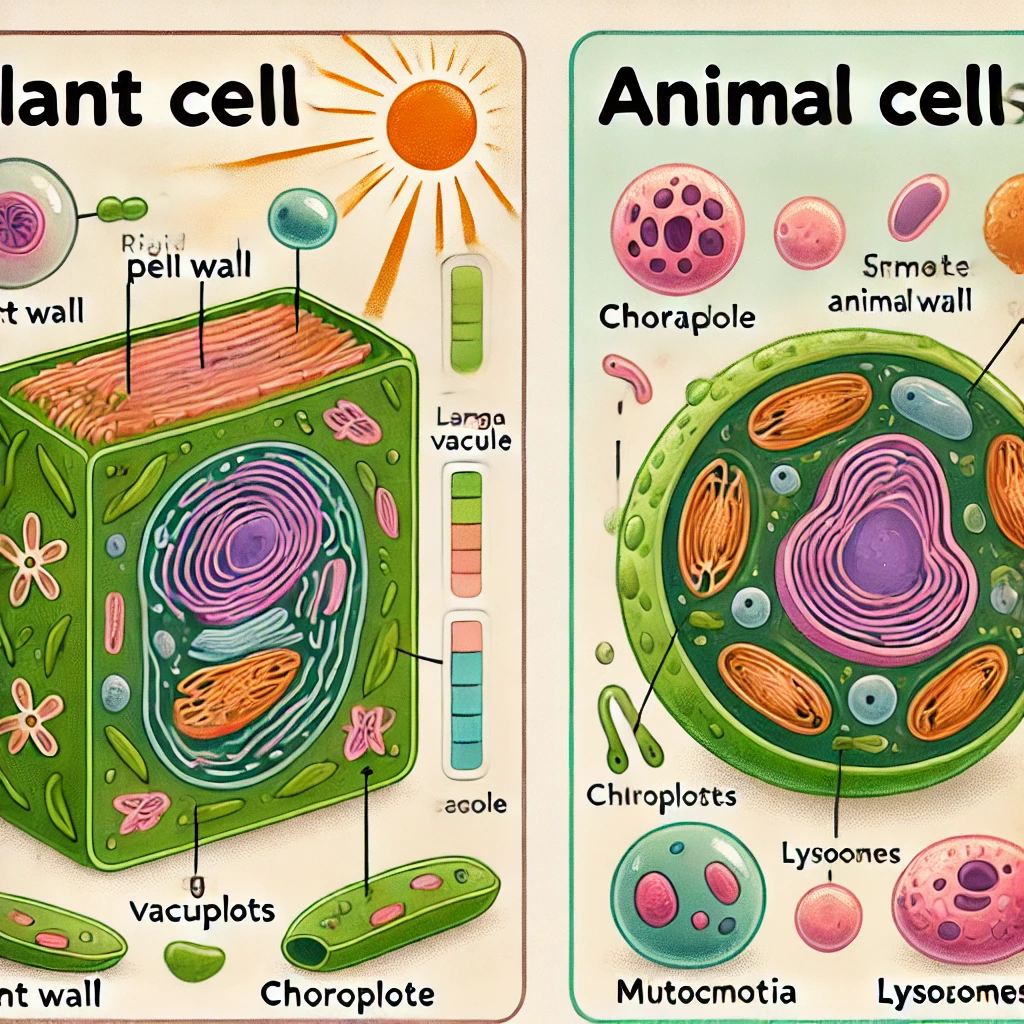Plant Cells vs. Animal Cells: A Fun Comparison

Imagine plant cells and animal cells as two different styles of “life architecture.” Plant cells are like a green factory with solar panels and strong walls, while animal cells resemble a flexible, vibrant space.
Cell Wall vs. No Cell Wall:
Plant cells have a tough cell wall, similar to a building’s outer wall, providing support and protection, allowing plants to stand upright. This is why trees and plants have a defined shape. On the other hand, animal cells have no cell wall, only a soft cell membrane, making them more flexible, which allows animals to move in various ways.
Chloroplast vs. No Chloroplast:
Inside plant cells, there are chloroplasts — like built-in solar power systems that perform photosynthesis to create energy from sunlight. This enables plants to make their food without moving around. Animal cells lack chloroplasts and must obtain energy by finding food, just like rabbits munching on carrots or monkeys picking fruits.
Large Vacuole vs. Small Vacuoles:
Plant cells often have a large central vacuole, similar to a big storage room, where they store water, nutrients, and even waste, helping them survive in dry times. In contrast, animal cells have many smaller vacuoles, which work more like personal water bottles they carry around, providing what they need at the moment.
Fixed Shape vs. Variable Shape:
Because of the cell wall, plant cells generally have a fixed shape, like rectangles or polygons. Animal cells, lacking a cell wall, have diverse shapes — round, flat, or irregular — depending on the function they perform and their environment.
No Centrosome vs. Centrosome:
Plant cells usually do not have centrosomes and instead form a cell plate during cell division. Animal cells, however, do have centrosomes, which guide cell division, ensuring chromosomes are divided accurately.
Few Lysosomes vs. Many Lysosomes:
Plant cells have fewer lysosomes for waste processing, relying more on their vacuoles for storage and cleanup. Animal cells, in contrast, have many lysosomes that act like tiny janitors, breaking down waste and damaged parts to maintain balance.
In summary, plant and animal cells, while sharing basic cell structures, have distinct differences in their key components and functions. These differences enable plants to stay in one place and make their food through photosynthesis, while animals can move freely, seek food, and respond to changes. This variety makes the world of life rich, dynamic, and interconnected.